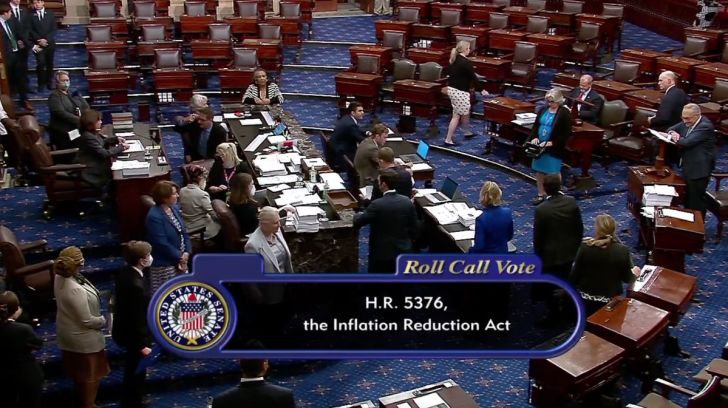“The panopticon is a type of institutional building and a system of control designed by the English philosopher and social theorist Jeremy Bentham in the 18th century. The concept of the design is to allow all prisoners of an institution to be observed by a single security guard, without the inmates being able to tell whether they are being watched.
Although it is physically impossible for the single guard to observe all the inmates' cells at once, the fact that the inmates cannot know when they are being watched means that they are motivated to act as though they are being watched at all times. Thus, the inmates are effectively compelled to regulate their own behaviour.”
— Wikipedia
Good Morning Everyone,
We have discussed many times, the dynamic between money and power, and highlighted the risk and harm caused by centralising such power. This is the fundamental problem bitcoin solves. It is money without a center. And it is money that provides the most fair issuance possible and avoids the common pitfall to disproportionately reward any one entity over another. That is not to say distribution is even or equal. Certainly not. Distribution of anything is never going to be even, and to attempt to do so is at its core a deeply unfair act.
To evenly distribute something amongst a cohort of people means that individuals are not rewarded for deploying more effort, for being more skilled, more competent and capable and ultimately doing a superior job than someone else. And likewise for those who are underperforming they would have no incentive to work harder or learn new skills as there would be no reward available incentivising them to do so. This would dissolve and distort the incentives that would otherwise exist and it would seem to be the case from past historical examples, to produce highly undesirable outcomes.
At the same time, if instead of distributing evenly, certain individuals or entities were disproportionately favoured and awarded an outsized percentage of issuance due to their proximity to the center of supply, this would install a deeply unfair standard at the core protocol level. If applied to the technology of money this unfair issuance creates a catastrophic dynamic where those who are closest to the center of that distribution have outsized power over all others within the network and this dynamic only accelerates over time.
This last example describes the issuance of Ethereum. As Nik Bhatia explains in the below clip. Where bitcoin has no center and has no preferential issuance and you can simply buy, mine or earn bitcoin at a market rate and by doing work; Ethereum does have a center, and It is more like a company than anything resembling a truly decentralised protocol.
To quote Nik (who also has a great paid substack publication called The Bitcoin Layer)
“Ethereum began in 2015 with a pre-mine. This is a sale of Ethereum tokens in exchange for bitcoin. 72,000,000 Ethereum tokens were issued in this pre-mine. 60m of the coins were sold to the investment public and 12m coins were given to insiders. The supply of Ethereum today is above 120m, which means that almost 60% of today’s total supply was part of that pre-mine process. Data shows that 40% of that pre-mine went to the top 100 customers giving us indication that the ownership of Ethereum is highly centralised. This resembles the issuance of an equity in which the majority of the shares go to the management and the ownership.”

The bottom line is the two (bitcoin & ethereum) are just not the same. Most Ethereum supporters seem to either not know this, simply not care, or not understand the significance of it. However it is fundamentally important to grasp. As I mentioned earlier, such an issuance schedule is at it’s core deeply unfair, especially when you consider the profound impact of money on our lives, and with Ethereum posturing to move to a Proof-of-Stake system in September, this significance is only acerbated further whereby those with the most amount of eth staked have an outsized voting right and thus influence on the network.
We already have this system. It’s called fiat, and ethereum is just a shinier new version of it. Nothing close to the paradigm shifting technology of bitcoin.
Many in the community have been surprised at the SEC’s allowance of protocol’s like Ethereum, when they have been clearly and unequivocally exposed as what are considered securities. This is not to suggest I want the SEC or any government to do anything, just that one can only be curious why they would not have enforced their mandate, in the face of the obvious. At the end of the day we don’t need any central body to assert their authority - the market should be able to work itself out. I have postulated for some time, that I believe the reason for this is because this experimentation of permissioned, centralised “crypto digital assets“ provide central banks and government with the single best opportunity to obtain the technology to install their Central Bank Digital Currencies (CBDC).
They can basically let the grifters continue along in their grift, and allow them to siphon funds from the public to do so while they improve the technology, until such time as the technology is suitable to be captured by government and installed more broadly directly by central banks. The risks posed by CBDCs cannot be over stated. They are in my opinion to be considered the most significant threat to freedom and civil liberties, possibly ever, and would be very likely over time to move us toward some kind of digital panopticon.
The below tweet from Brandon Quittem demonstrates exactly this.


Joseph Lubin who is the co-founder of Ethereum that you’ve likely never heard of, published the document attached specifically for The World Economic Forum in 2020. The document is a “concrete proposal” to those in Davos about the benefits of a CBDC, and why it should be built on Ethereum. It is basically a word salad full of blockchain buzzwords suggesting we should remove cash, enable central banks more control and greater surveillance and that those in less developed nations should be forced to use them. To be honest the whole proposal is gross, but a few of the takeaways from the document are as follows:
“Our intention is to give the reader an overview of the potential advantages and the challenges in a CBDC as well as, through a concrete proposal for a specific approach, to move the debate beyond the theoretical.“
“CBDC can give the central banks more effective, future-oriented tools to allow them to implement monetary policy in more direct and innovative ways and keep pace with technological change.“
“Widespread use of CBDC instead of private payment tokens could also help central banks retain sovereignty over monetary policy in tokenised assets markets, an important consideration should such markets come to represent significant portions of the economy. Other benefits include potentially new regulatory monitoring and enforcement tools, cheaper cross-border remittances, improvements to the interbank payments infrastructure and innovation in retail markets. CBDC could also be a superior replacement to physical cash, helping alleviate some of the risks and costs associated with banknotes.“
“Finally, if structured in a way that allows the CBDC to be traced, it could be useful in more efficient sanctions and AML enforcement contexts.“
“Tokens are powered by smart contracts, which are software applications that live in a distributed fashion in the network. These smart contracts can be programmed rules and business logic that are automatically enforced by the network and can restrict CBDC transfers in any way deemed suitable by the central bank and the regulator. This could make it possible to for instance “hard wire” KYC/AML procedures into the tokens themselves, greatly simplifying and improving the effectiveness of regulatory compliance mechanisms. Tokens could also be pre-programmed with rules that determine exactly under what conditions a transfer can be reversed or assets recovered. Last but by no means least, proof-of-authority (PoA) consensus on Ethereum is not energy intensive and would support a large-scale network at low energy cost and environmental impact.“
As you can see, a CBDC would very likely be the end of any notion of privacy in the digital age. Central Banks would be granted full and total control over the technology of money, which to a large extent means to have control over you and I. Regardless of how they first begin you can be assured that over time, even if initially they were not exerting outsized control over your decision making, how and when you spend your slave coin tokens, that over time, there is only one way for a system with absolute power to go. Absolute power corrupts absolutely.
This kind of power would be used to silence dissenting voices, it would be used to impose the will of central banks on other entities, it would enable full and total control and surveillance of money and would lead to the increasingly centralised control of all essential infrastructure and resources over time.
There is no reason however as we move further into the digital age, that we need lose the fundamental rights that mechanisms like cash have afforded us. It really does come down to individuals voting with their actions. It is critical that the dangers that CBDC’s pose, be made clear to people everywhere. I’m confident that once armed with the information the downside becomes impossible to ignore.
There are a number of incentives that could be used to onboard people to the digital slave-coin and lure them into opting into this predatory system. A few that come to mind are 1) Coercion as we saw with the “no jab, no job” vaccine policy in Australia (For all those in the US and abroad - Yes. That really happened!); 2) a one-off initial payment; 3) leverage a UBI-like handout or; 4) leverage the fact that people are deeply indebted and provide some kind of relief in exchange for their joining the network.

It is the case, that as of this moment, our only genuine alternative to this digital dystopian communist techno-state installation is the truly free and open market of bitcoin. Where a CBDC would be slave money, Bitcoin is freedom money. Bitcoin (while not perfect) provides us with a far superior alternative where we do not need to be slaves to the central bank in order to eat beef, or use electricity. It allows us to continue to build upon the underlying protocol in the open and to improve our privacy instead of accepting the rule of others and relinquishing it. A CBDC would give the total ability for our transactions to be censored, and could be used to penalise us for any kind of wrong think or to attack dissenting voices. Bitcoin on the other hand gives you the complete freedom to interact and send value to anyone anywhere, and no one can stop the transaction from being processed.
One enables top-down total control, and the other allows for the beautiful bottom-up flourishing of human potential.
It’s not even a choice.
Get educated, and a help those around you do the same. Share these letters around with at least one other person to help amplify the signal.
We are going to win.
Hope you all have a great day. I’ll talk to you tomorrow.
AK
Published Block Height: 749817












Share this post